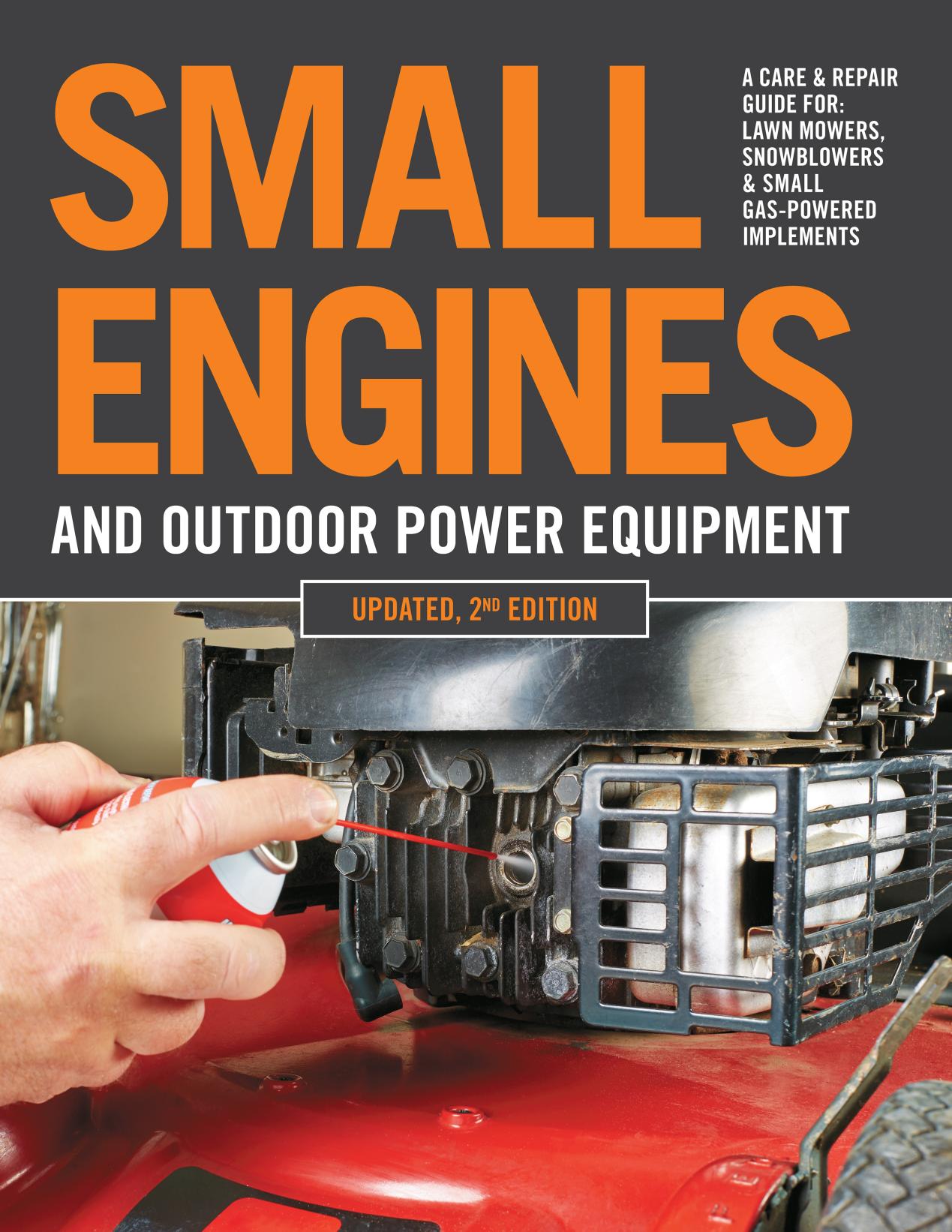Small Engines and Outdoor Power Equipment by Peter Hunn

Author:Peter Hunn
Language: eng
Format: epub, azw3, pdf
Publisher: Cool Springs Press
Published: 2014-09-22T04:00:00+00:00
Heavier-duty small engines contain a fuel filter. A sampling of in-line filters are seen above. If you don’t find a filter mounted in your fuel line, look for one inside the fuel tank (see page 75).
WHICH GASOLINE TO USE?
Use only fresh unleaded gasoline in your small engine. Here are a few other tips for gasoline use in 4-stroke small engines.
• Use gasoline with a 77 octane rating or higher for L-head engines and 85 or higher for overhead valve engines. Since small engines operate at relatively low compression ratios, knocking is seldom a problem, and using gasoline with a higher octane rating is unlikely to offer any benefit.
• Using gas that is over a month old and does not contain a gasoline stabilizer may result in hard starting and varnish formation. Drain the tank if fuel sits for more than a month. The Environmental Protection Agency recommends pouring old fuel into your car’s gas tank. As long as the car’s tank is at least half full, the old fuel will mix harmlessly with the new and will not affect your car engine.
• Four-stroke engines are used on most lawn mowers and large lawn equipment. NEVER use an oil-gasoline mixture in a 4-stroke, since the engine has an independent oil supply. If you find an oil fill cap leading to the crankcase, you can be sure your engine is a 4-stroke.
Download
Small Engines and Outdoor Power Equipment by Peter Hunn.azw3
Small Engines and Outdoor Power Equipment by Peter Hunn.pdf
This site does not store any files on its server. We only index and link to content provided by other sites. Please contact the content providers to delete copyright contents if any and email us, we'll remove relevant links or contents immediately.
| Automotive | Engineering |
| Transportation |
Whiskies Galore by Ian Buxton(41937)
Introduction to Aircraft Design (Cambridge Aerospace Series) by John P. Fielding(33090)
Small Unmanned Fixed-wing Aircraft Design by Andrew J. Keane Andras Sobester James P. Scanlan & András Sóbester & James P. Scanlan(32763)
Craft Beer for the Homebrewer by Michael Agnew(18194)
Turbulence by E. J. Noyes(7977)
The Complete Stick Figure Physics Tutorials by Allen Sarah(7336)
Kaplan MCAT General Chemistry Review by Kaplan(6899)
The Thirst by Nesbo Jo(6877)
Bad Blood by John Carreyrou(6581)
Modelling of Convective Heat and Mass Transfer in Rotating Flows by Igor V. Shevchuk(6406)
Learning SQL by Alan Beaulieu(6237)
Weapons of Math Destruction by Cathy O'Neil(6213)
Man-made Catastrophes and Risk Information Concealment by Dmitry Chernov & Didier Sornette(5951)
Digital Minimalism by Cal Newport;(5700)
Life 3.0: Being Human in the Age of Artificial Intelligence by Tegmark Max(5509)
iGen by Jean M. Twenge(5384)
Secrets of Antigravity Propulsion: Tesla, UFOs, and Classified Aerospace Technology by Ph.D. Paul A. Laviolette(5332)
Design of Trajectory Optimization Approach for Space Maneuver Vehicle Skip Entry Problems by Runqi Chai & Al Savvaris & Antonios Tsourdos & Senchun Chai(5037)
Pale Blue Dot by Carl Sagan(4950)
